Going green is not just about buying organic food and cycling to work. More and more buildings are designed to be as environmentally sustainable as possible. In Canada, the Canadian Green Building Council uses an adapted version of the Leadership in Energy and Environmental design, or LEED, to rate buildings on how green they are. Here are 20 of Canada’s greenest buildings according to their LEED certification.
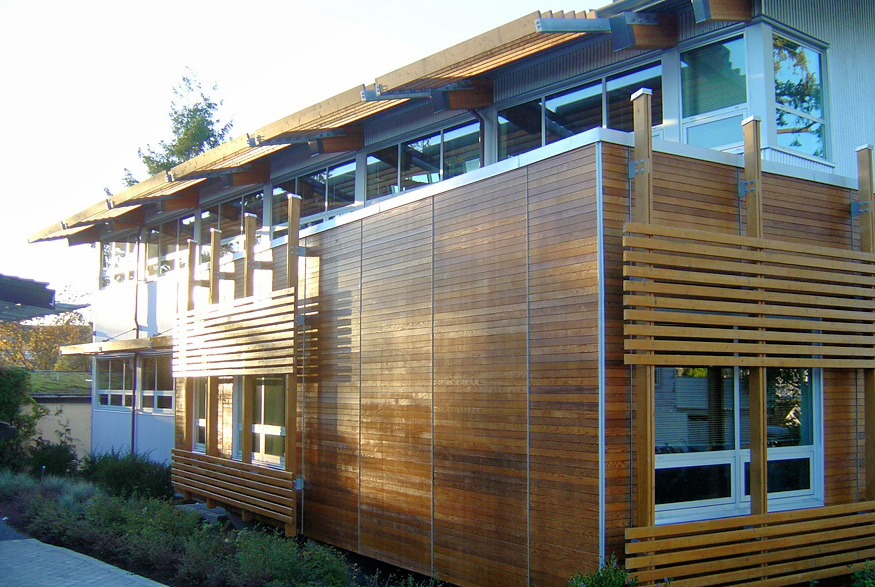
1. Gulf Islands National Parks Preserve Operations Centre, Sidney, British Columbia
The Operations Centre at Gulf Islands National Park Preserve was the first buildings in Canada to receive LEED Platinum status, in 2006. It harvests rainwater for reuse, for example in low-flush toilets, uses photovoltaic solar energy and features drought-tolerant plants for landscaping.

2. Vancouver Convention Centre West Building, Vancouver, British Columbia
The LEED Platinum-certified West Building of the Vancouver Convention Centre features Canada’s largest living roof which is irrigated with wastewater from the building’s own treatment plant. The building uses sea water in its heating and cooling systems and has a fish habitat complete with kelp forest built into its foundations.
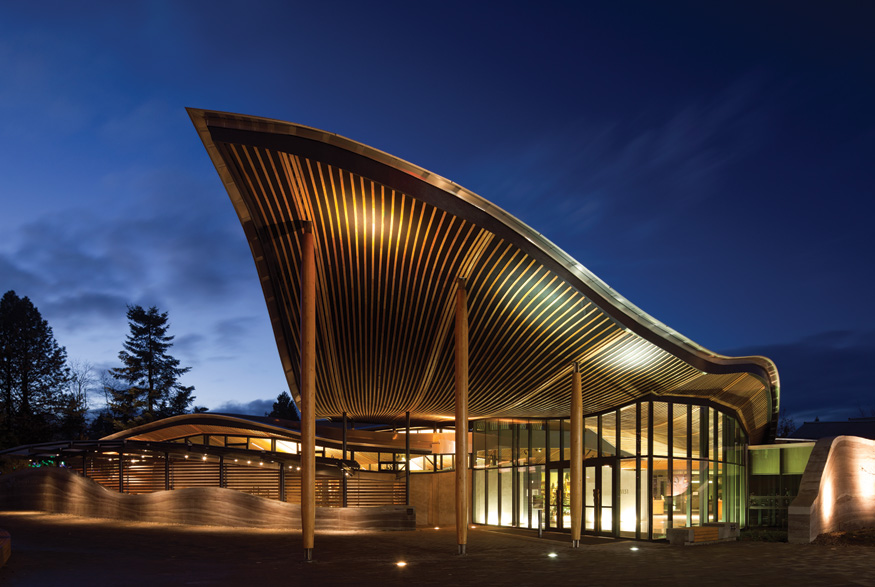
3. VanDusen Botanical Garden Visitor Centre, Vancouver, British Columbia
The LEED Platinum-certified VanDusen Botanical Garden Visitor Centre has won several awards for its sustainable design and was the first building in Canada to apply for Living Building Challenge recognition. The building is water independent, using rainwater from its green roof and treating all of its black water on-site.

4. Centre for Interactive Research on Sustainability, Vancouver, British Columbia
Located on the Point Grey campus of the University of British Columbia, the Centre for Interactive Research on Sustainability, or CIRS, uses rainwater for all its water needs. Natural ventilation and lighting also help reduce the LEED platinum-certified building’s energy usage.
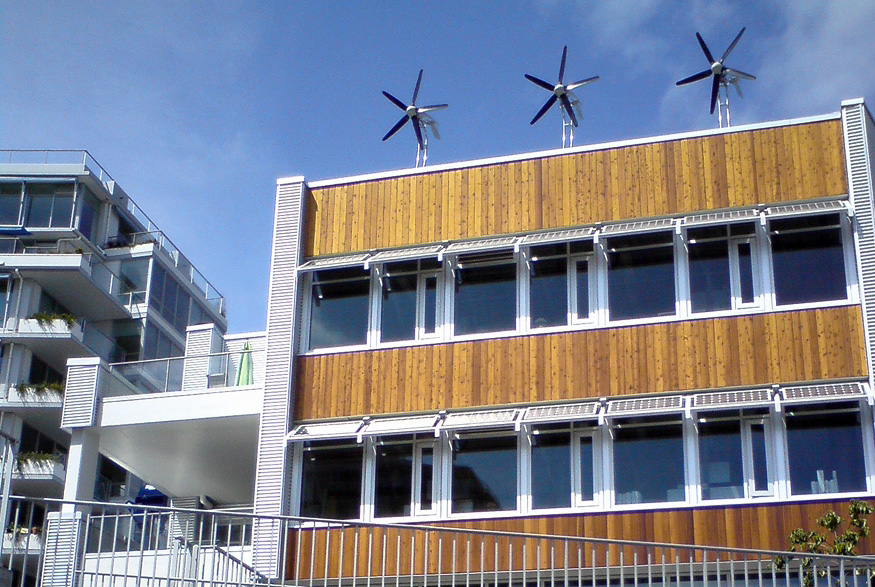
5. Dockside Green, Victoria, British Columbia
The Dockside Green development is LEED Platinum certified and has its own biomass gasification plant for generating gas for heating. It also treats its own sewage for reuse, has high-efficiency showers, faucets and appliances and a car-sharing program. Residents can even control their heating remotely via the internet.
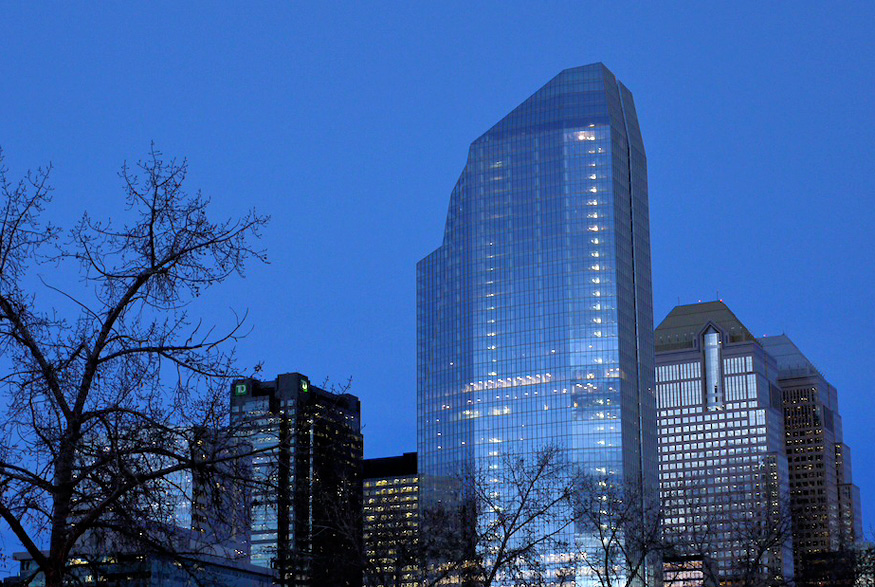
6. Eighth Avenue Place, Calgary, Alberta
Eighth Avenue Place was not built without controversy, since the old Penny Lane Mall had to be demolished to make space for the two new office towers. However, the new complex features a winter garden, a green roof and thermal energy monitoring and control, earning it LEED Platinum status.
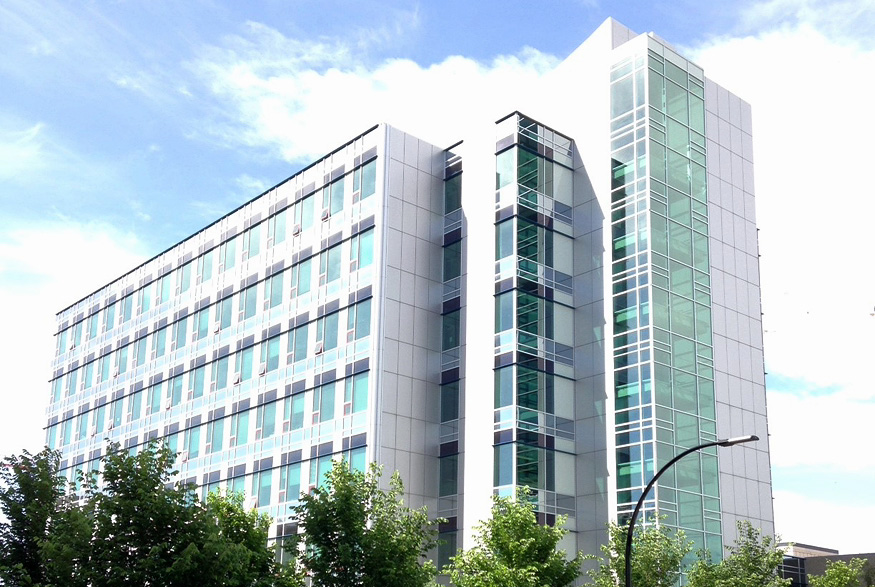
7. U of C’s Energy Environment Experiential Learning Building, Calgary, Alberta
The Energy Environment Experiential Learning Building uses about half as much energy as a conventional laboratory building, due to features such as natural ventilation, earth tubes and solar shutters. The LEED Platinum certified building also has low-flow plumbing fixtures and uses rainwater for flushing toilets.

8. Centennial Place, Calgary, Alberta
The two skyscrapers that make up the LEED Platinum-certified Centennial Place feature low-flow plumbing fixtures, curtain wall technology and motion sensors on the lighting controls. The complex also has a high-efficiency heating and cooling plant and a green roof.
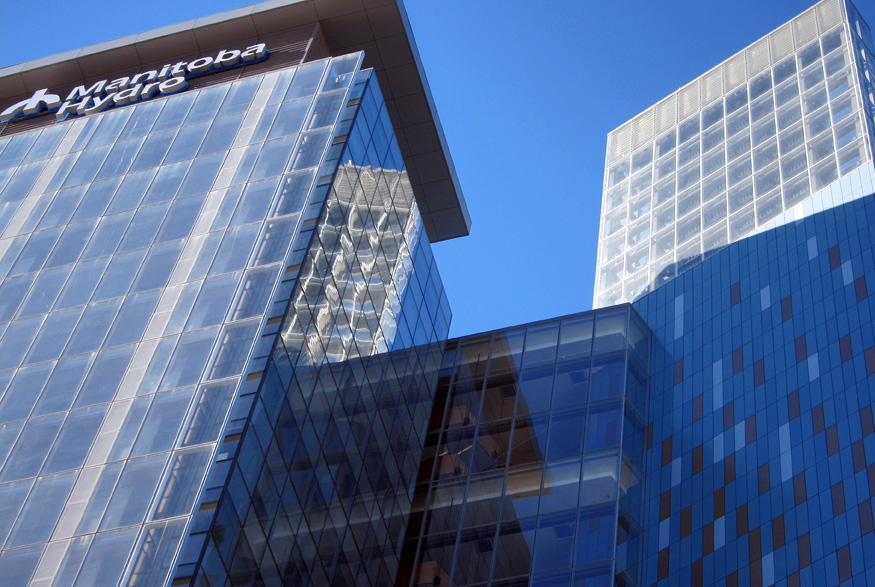
9. Manitoba Hydro Place, Winnipeg, Manitoba
Manitoba Hydro’s headquarters was the first office tower in North America to receive LEED Platinum certification. Features such as a solar chimney for ventilation, a geothermal HVAC system, waterfalls to humidify fresh air, green roofs, high ceilings and glass walls for natural light means the building saves about 70 per cent energy.
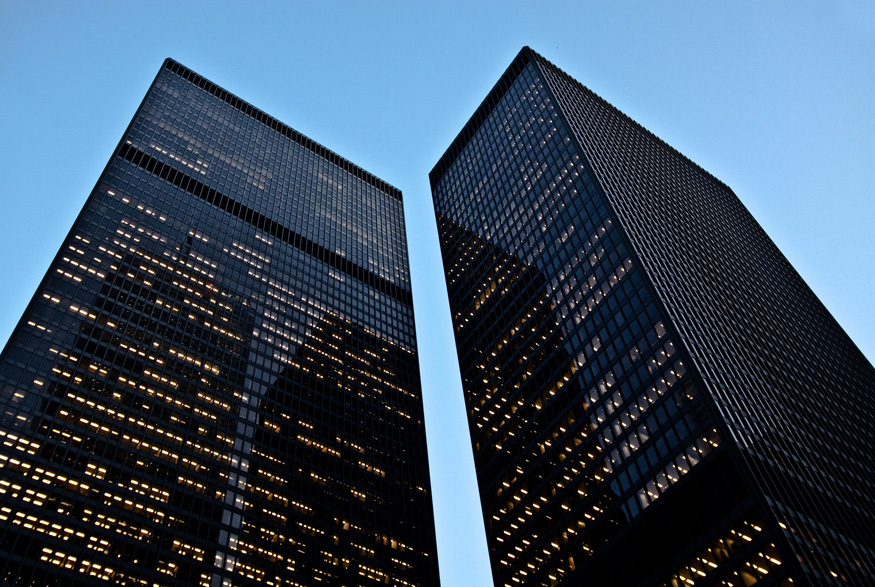
10. TD Centre, Toronto, Ontario
Since 2015, all six of the buildings making up the TD Centre have been LEED Platinum certified, making it one of North America’s largest complexes with this status. Its sustainable features include a living roof, a cooling system that uses water from the bottom of Lake Ontario, and a system that measures soil moisture to decrease water consumption.
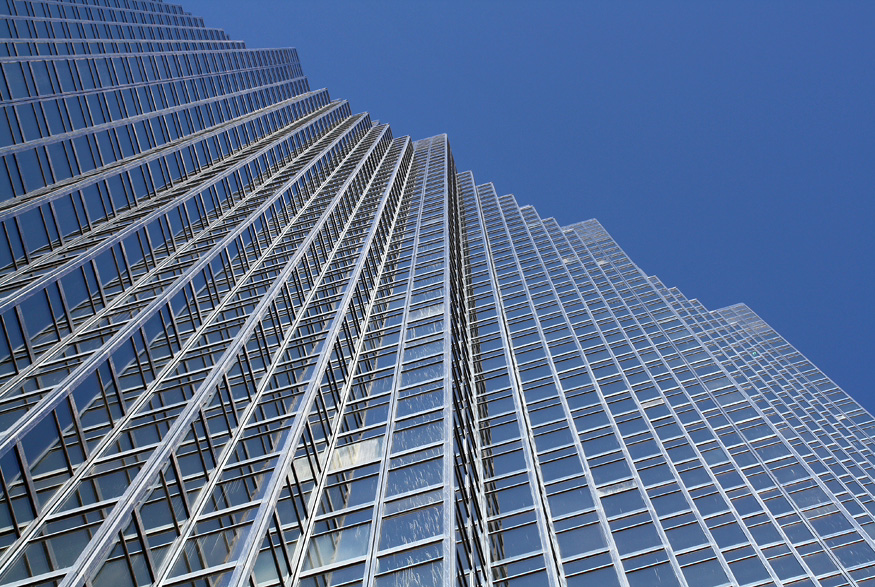
11. Royal Bank Plaza, Toronto, Ontario
The LEED Platinum-certified Royal Bank Plaza has been designed to maximize natural daylight. To reduce its energy consumption even more, the building is cleaned mainly during the day rather than at night. TV monitors give employees real-time updates on how much energy they are consuming, with tips on how to reduce this.
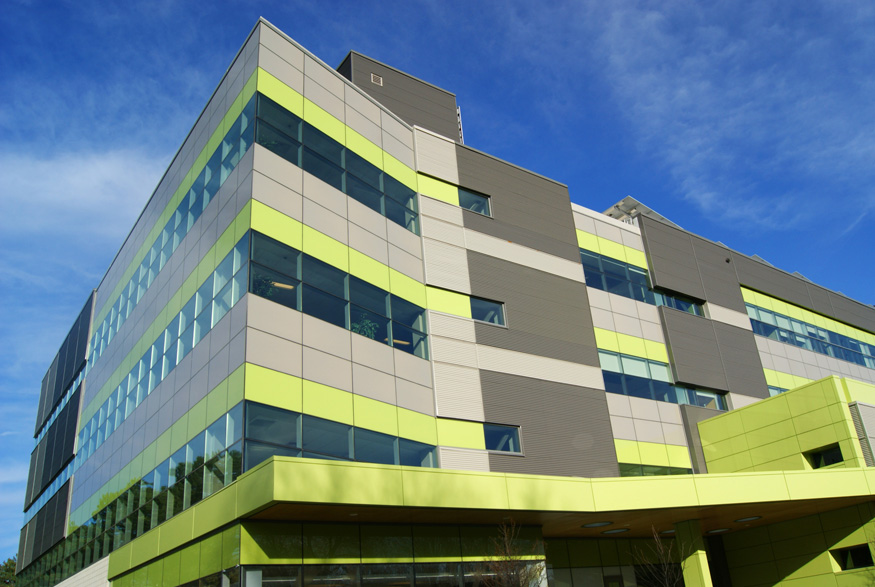
12. University of Waterloo’s Environment 3 Building, Waterloo, Ontario
The Environment 3 Building on the campus of the University of Waterloo has LEED Platinum status and was built with sustainable wood and recycled steel. A glass atrium provides natural light while a living wall connected to the ventilation system filters the air.
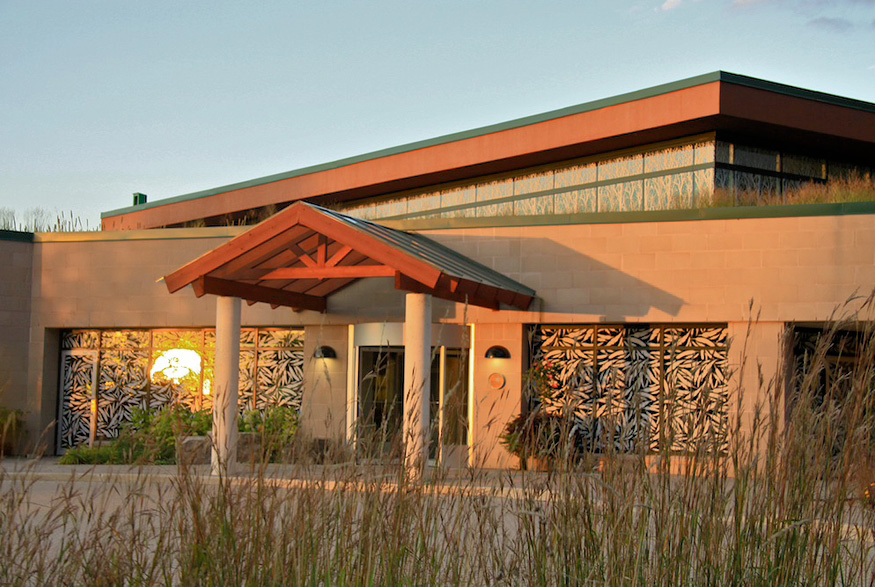
13. Earth Rangers Centre, Woodbridge, Ontario
The headquarters for Canada’s largest conservation organization is also a leader in sustainable building technology. State-of-the-art solar panels in the parking lot and on top of the aviary, radiant heating and cooling technology and displacement ventilation are some of the features that earned the Earth Rangers Centre LEED Platinum certification.

14. Robinson Place, Peterborough, Ontario
The LEED Platinum-certified Robinson Place houses the Ontario Ministry of Natural Resources and Forestry. Among its sustainable features are energy-efficient chillers, a rainwater collection system for use in the toilets, and a community garden.
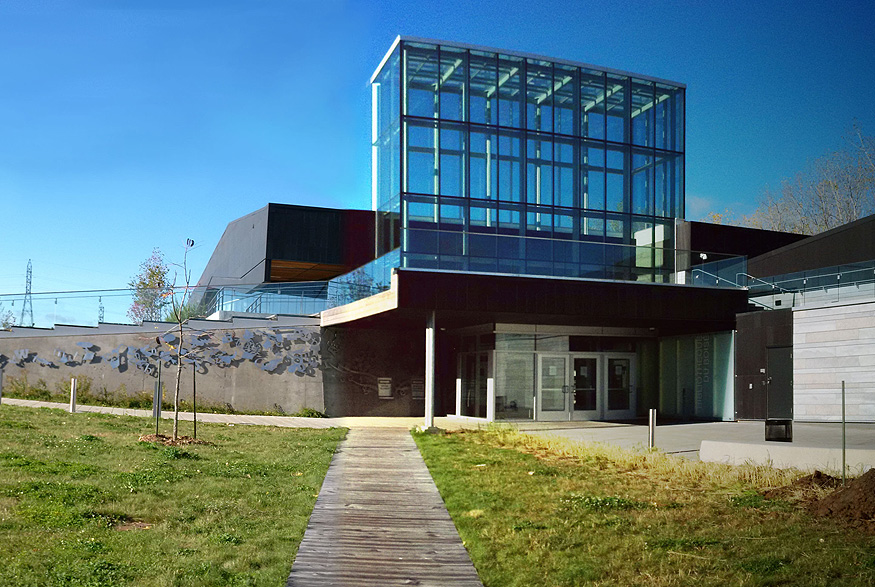
15. Bibliothèque du Boisé, Montreal, Quebec
Built mainly from locally sourced, recyclable materials, the award-winning Bibliothèque du Boisé has LEED Platinum status. Three-quarters of the building’s floor area can be lit naturally while a glass prism collects heat which is then redistributed.

16. Planétarium Rio Tinto Alcan, Montreal, Quebec
Natural ventilation and lighting are two of the strategies used to reduce the Planétarium Rio Tinto Alcan’s energy consumption. The LEED Platinum-certified building also features a green roof, drought-resistant plants and rainwater collection for less water consumption.
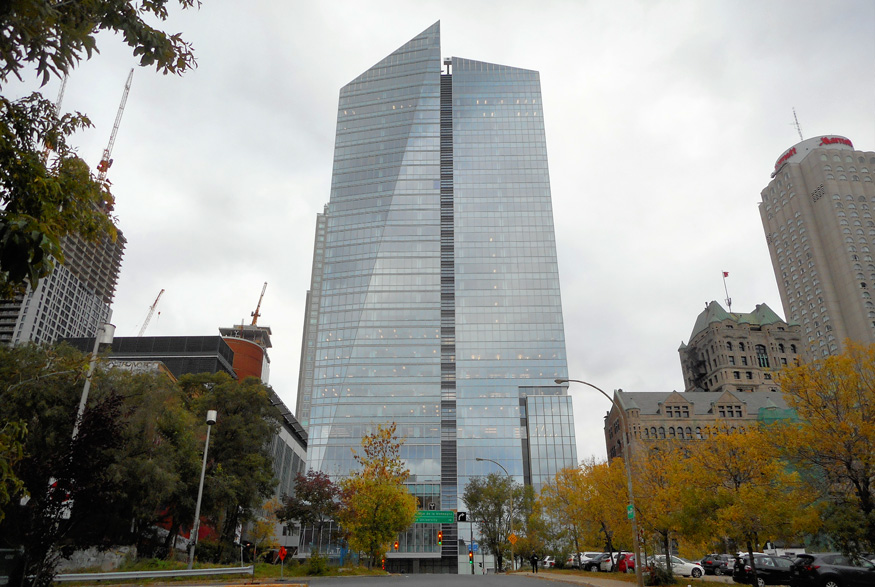
17. Deloitte Tower, Montreal, Quebec
The first office building in Montreal to have LEED Platinum status, the Deloitte Tower uses grey-tinted glass with a special coating to allow for more natural light and to control heat inside the building. This means a significant reduction in energy consumption.
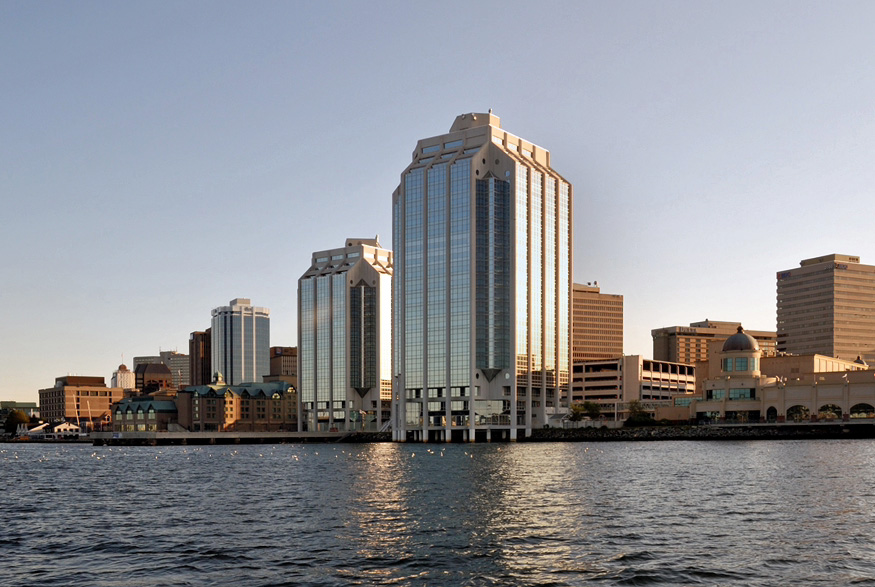
18. Purdy’s Wharf, Halifax, Nova Scotia
A prominent feature of Halifax’s skyline is the three buildings of Purdy’s Wharf. The office complex was the first in Atlantic Canada to receive LEED Gold certification and uses sea water to chill the buildings’ cooling water.
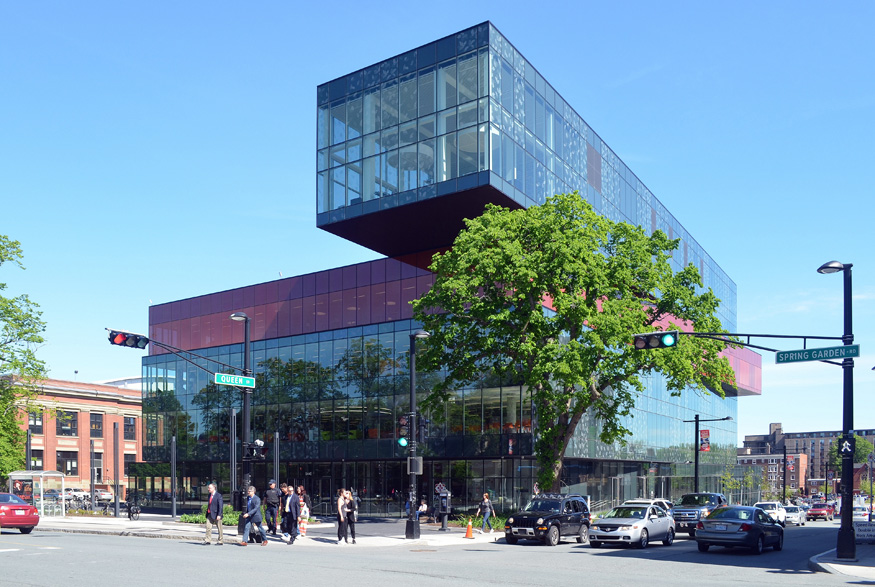
19. Halifax Central Library, Halifax, Nova Scotia
The Halifax Central Library was designed to resemble a stack of books but also to be environmentally sustainable. The LEED Gold-certified building has a glazed façade to allow for solar heating while maximizing natural light. Other features include a green roof and a rainwater harvesting system.

20. Greenstone Building, Yellowknife, Northwest Territories
Yellowknife’s Greenstone Building was Northern Canada’s first building to achieve LEED Gold status. The curtain wall with photovoltaic cells in the building’s central atrium is one of the largest in the world and is used to heat water harvested from the green roof and groundwater.
HGTV your inbox.
By clicking "SIGN UP” you agree to receive emails from HGTV and accept Corus' Terms of Use and Corus' Privacy Policy.





